As Malaysia sought to contain the outbreak of COVID-19, the Prime Minister announced a restricted movement order, effective from 18th of March and then extended to 14th April 2020.
The order included barring all overseas travel, the prohibition of mass gatherings, temporary closure of all schools and education institutions.
Now with self-quarantining and “work from home” becoming the norm, everyone wants to ensure that their home is a safe place and one that is bacteria and virus-free. It has become more crucial than ever now to disinfect your homes.
But, how does disinfecting work against coronaviruses? What chemicals are effective? And what’s the right way to do home disinfecting? Here are all the things you need to know about disinfecting your home properly.
Firstly, why do you need to disinfect your home?
The COVID-19 virus is known to be transmitted through respiratory droplets such as coughs, sneezes, and spit. According to research, airborne droplets can survive for up to 3 hours in airborne droplets, 24 hours on porous surfaces like cardboard, fabric, and paper, and 72 hours on shiny surfaces such as glass, plastic, and stainless steel.
These droplets could easily land on objects and surfaces, especially in crowded public areas and “high-touch” surfaces such as lift buttons and door handles. If you touch these surfaces, you can easily bring it home with you, and deposit it on surfaces in your home. The likelihood of a person touching their face after coming in direct contact with any surface is very high, thus raising the possibility of getting infected by someone else.
Disinfecting helps to reduce the chances of getting exposed to viruses and bacteria in your home. Compared to cleaning, which removes germs, disinfecting utilises chemicals to kill viruses and bacteria. Germicides and biocides found in disinfectant chemicals kill microbes by oxidising or denaturing the protective layer around them.
List of common household disinfectants and where to get them
0.1% Sodium Hypochlorite (household bleach)
Bleach is mainly used in hospitals where the risk of coming in contact with the virus is much higher. Medical staff use it for cleaning surfaces that are most likely contaminated with pathogens like bed rails, doorknobs, and frequently touched surfaces.
Most common household bleach brands contain sodium hypochlorite such as Clorox, Cocorex, Kao, Tesco and Giant home brands.
To kill bacteria and viruses, sodium hypochlorite acts as an oxidizing agent, which can oxidize molecules in virus cells and kill them.
For hospitals, the solution’s concentration is required to be higher but for households, 0.1% concentration is ideal to deactivate the virus within a minute.
When you buy a bottle of bleach, the concentration is normally around 5.25%, which is too high for regular usage. To dilute it, add 6ml of household bleach to 240ml of water to prepare a 0.1% bleach solution, which is safe to use directly to wipe surfaces.
How to use: Wear gloves while handling bleach. Spray some on the surface, let it sit for at least 1 minute, and wipe with a wet cloth. Ventilation is important, so make sure your windows are open while disinfecting.
Where to buy bleach disinfectant online in Malaysia:
- Clorox Bleach 1L (Tesco Online, Mydin Online, Redtick, Mygroser, Happy Fresh)
- Cocorex Bleach 1L (ZuppaMarket, Mydin Online)
- Tesco Regular Bleach 1L (Tesco Online, Happy Fresh)
- Kao Bleach 1.5L (Mydin Online, Happy Fresh)
- Giant All-Purpose Bleach (Happy Fresh)
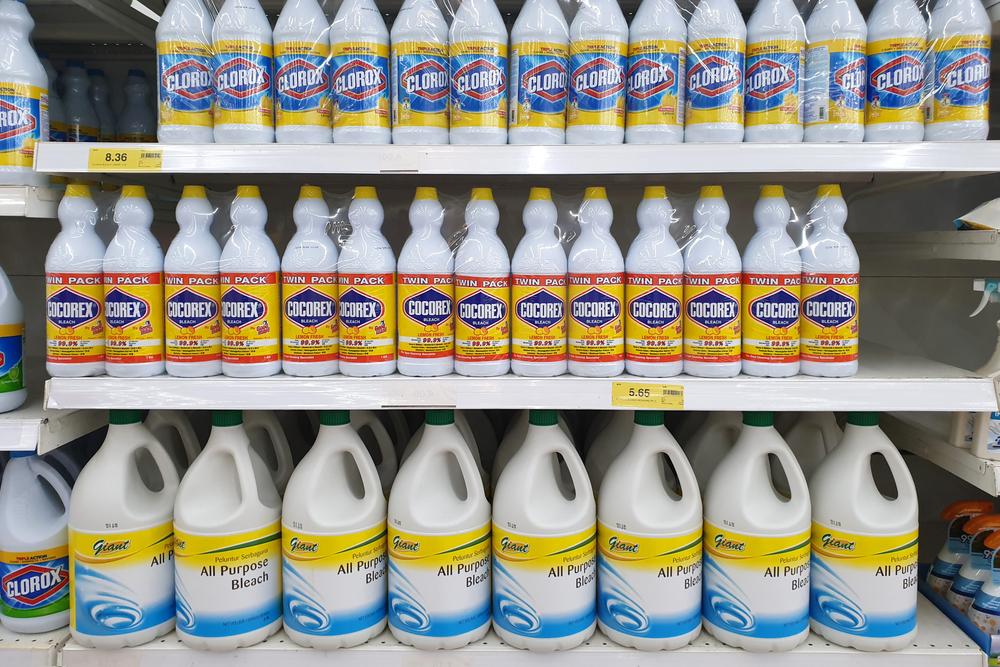
Home disinfecting by Recommend.myWe provide home disinfecting as an add-on service with any regular house cleaning. Our cleaners will take extra time to wipe down all your high-touch surfaces with disinfectant. The disinfectant we use is PECA disinfectant water. This cleaning liquid is a sodium hypochlorite solution that is proven to be effective against bacteria and viruses including CCV, MHV, and SARS-COV-2, (COVID-19). The solution is non-chemical, safe to use indoors and also safe around children and elderly persons.  |
Ethanol (ethyl alcohol)
Ethanol is an ingredient commonly found in most solvent cleaners. They are known to be bactericidal, germicidal, and virucidal.
Products containing ethanol are primarily disinfectant sprays and hand sanitizers from common brand-names like Dettol and Lysol. It is also sold on its own.
For alcohol-based disinfectant to be effective against viruses, it needs to be at least 70% alcohol. This allows it to dissolve the lipid layers on the virus membranes and effectively deactivate it. According to the WHO guidelines, it is effective for wiping small surfaces.
How to use: For disinfectants sprays and pure alcohol, leave solution on the surface for 30 seconds before wiping off. Do not spray a room with disinfectant as there are no proven disease-control benefits.
Where to buy alcohol-based disinfectant online in Malaysia:
- Dettol Disinfectant Spray 450ml (Watsons Online, Mydin, Tesco Online, Shopee)
- Lysol Disinfectant Spray 354g (Shopee, Lazada)
- Casino Ethyl Alcohol 250ml (Shopee, Lazada)
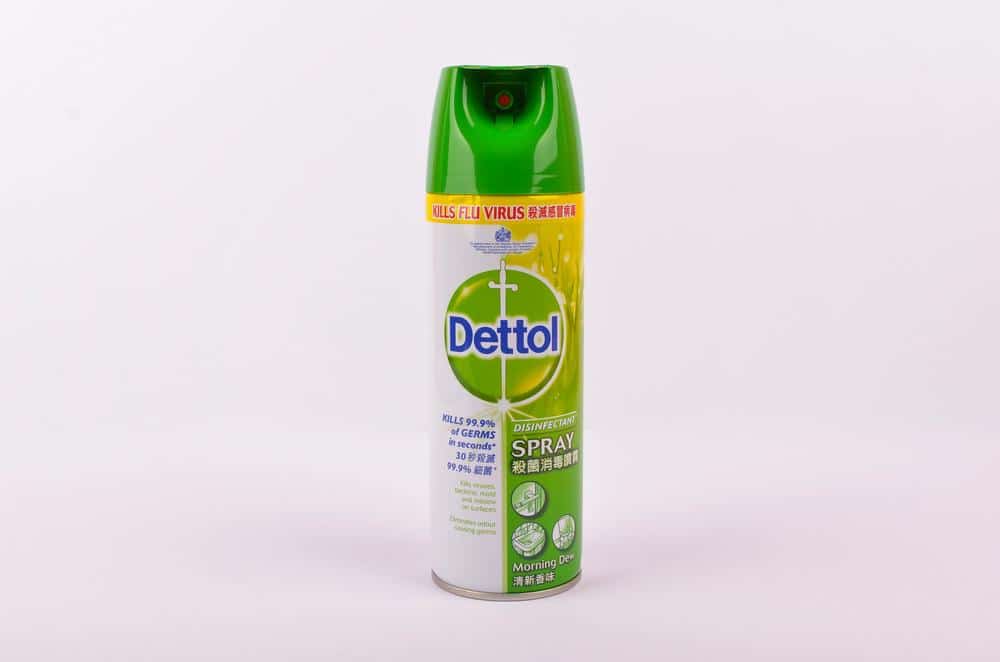

Hydrogen Peroxide
Hydrogen peroxide is used to clean wounds, but it works as a surface disinfectant too. This disinfectant solution can usually be found in pharmacies and drugstores. Like bleach, it is also antibacterial and antiviral. Typically, it is sold at 3% concentration and it is safe to use for disinfecting surfaces from COVID-19 traces.
Hydrogen peroxide can attack membrane lipids, DNA, and essential cell components to kill bacteria and viruses.
How to use: Leave solution on the surface for one minute before wiping off.
Where you can hydrogen peroxide online in Malaysia:
Polylab Hydrogen Peroxide 100ml (Watsons Online, Guardian Online, Shopee)
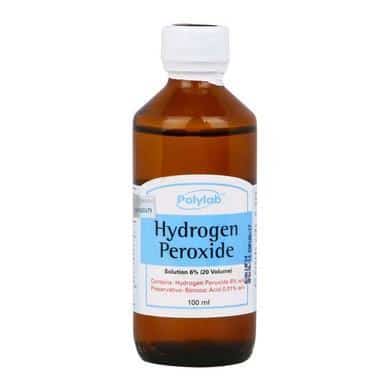
Benzalkonium Chloride
It is a substitute for alcohol and can be found in alcohol-free antibacterial sprays and wet wipes from household brand names like Tesco, Dettol, and Clorox.
According to a study in 2005 regarding its efficacy against the SARS coronavirus, this disinfectant was proven effective. Benzalkonium chloride can penetrate bacterial cell walls, thus causing damage to the cell membrane structural integrity.
How to use: Spray solution onto surface and leave for up to 5 minutes before wiping off. As for wet wipes, wiping down items and leaving them to dry is sufficient.
Where you can find alcohol-free antibacterial sprays and wet wipes online in Malaysia:
- Tesco Anti-Bac Multi-Surface Cleaning Spray 500ml (Tesco Online)
- Clorox Scentiva Multi-Surface Cleaner 887ml (Shopee, Lazada, Watsons Online)
- Dettol Anti-bacterial Surface Cleanser Trigger Spray 500ml (Mydin Online, Lazada, Shopee)
- Dettol Antibacterial Wet Wipes 50’s (Guardian Online, Watsons Online, Shopee)
- Clorox Disinfecting Wipes 35’s (Tesco Online, Shopee, Lazada)
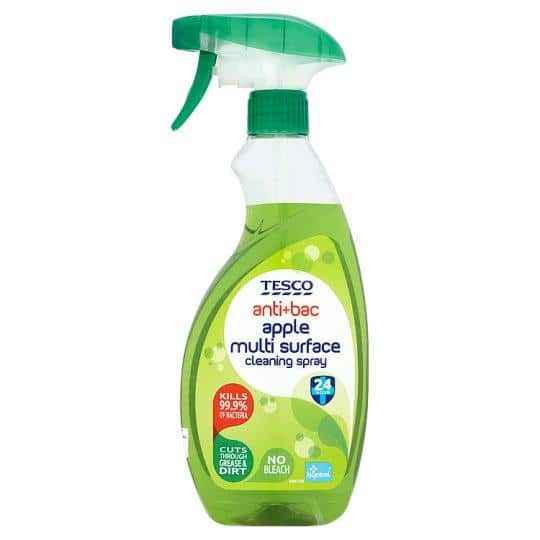
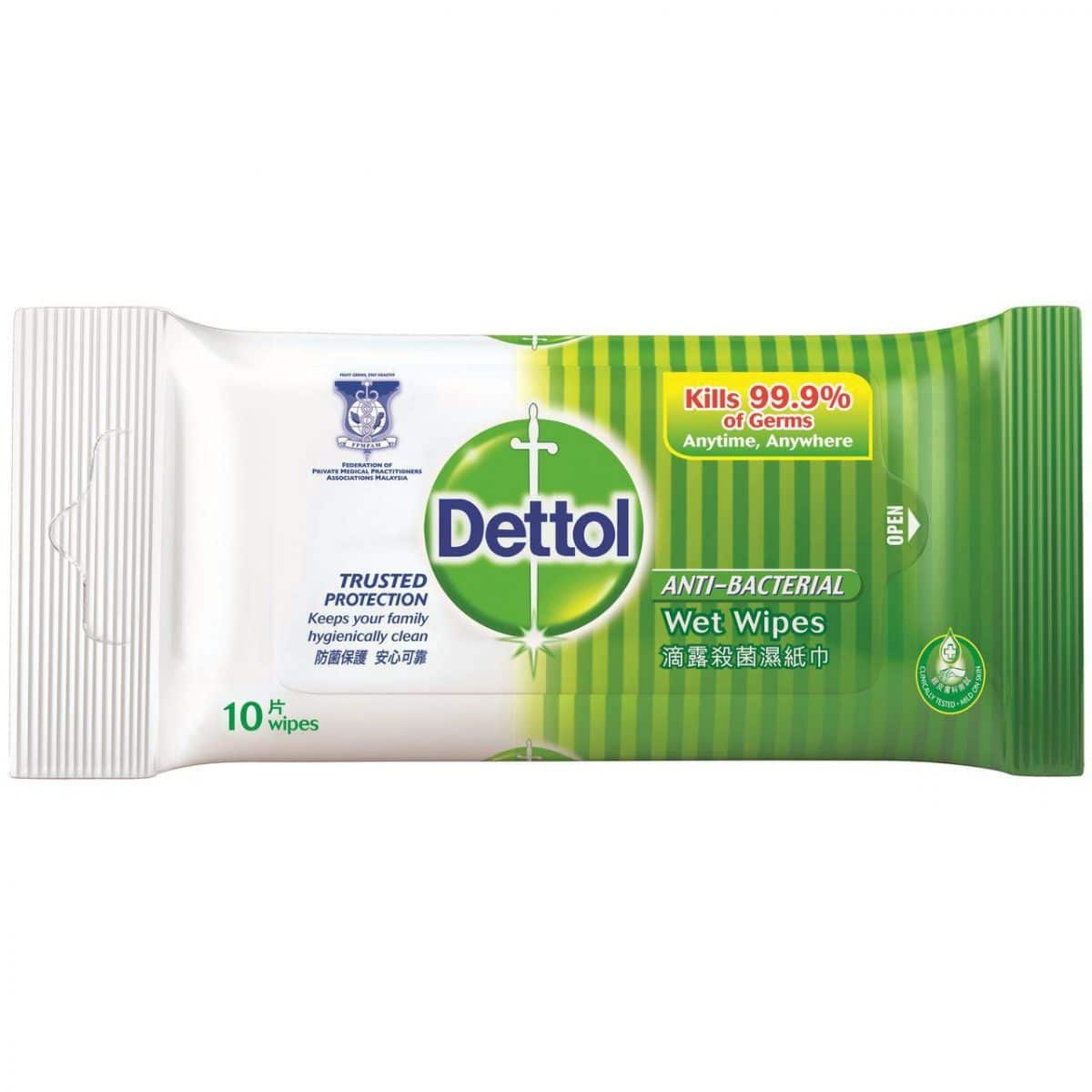
How to disinfect your home properly
Step 1: Disinfect “high-touch” surfaces
Before spraying disinfectants onto your household surfaces, it must first be cleaned to remove physical impurities.
Based on the CDC guideline, cleaning refers to the removal of germs, dirt and impurities from a surface, and it does not kill germs but only removes them. Disinfecting, on the other hand, refers to the use of chemicals to kill germs on surfaces. This process does not remove germs but kills them after cleaning and lowers the risk of infection.
According to Professor Brett Mitchell, disinfectants can’t break through organic materials like dirt and soil. Therefore, surfaces must be cleaned or swept up before being disinfected.
Most commonly touched household surfaces should be prioritised, like doorknobs, tables and countertops, light switches, handles, desks, faucets, and basins.
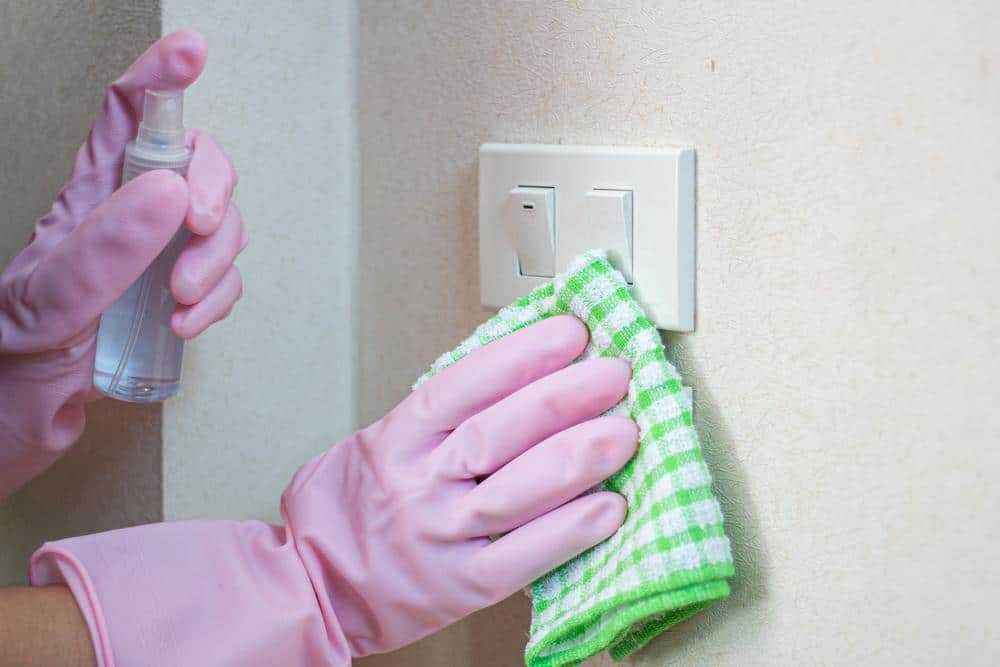
It’s important to let the disinfectant remain on the surface for some time. It depends on the product’s directions, but on average it would be for about 3 to 5 minutes.
Cleaning technique also matters because disinfection differs from merely wiping a surface clean. Wear disposable gloves while cleaning (especially with bleach products), and wipe in an ‘S’ shaped pattern to ensure the whole surface is covered.

Do not mix disinfectant products because the chemicals may react and cause damage to the surface.
Step 2: Disinfect soft fabrics
For soft surfaces such as carpets, rugs, drapes, and other types of cloth, laundering them with warm water or according to the manufacturer’s instructions and drying them thoroughly is sufficient.
Step 3: Disinfect your gadgets
Electronic gadgets like cell phones, remote controls, and touch screen gadgets should be wiped down with wet wipes (preferably containing more than 70% alcohol) and allowed to dry. Alcohol wipes are the best as it evaporates quickly, and will not soak into your phone’s sensitive electronics.




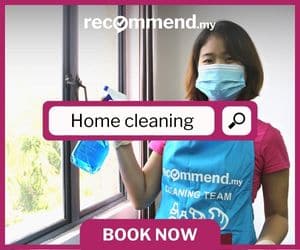



![How to Avoid Scam Home Cleaning Apps in Malaysia [And Where to Find Legitimate Ones]](https://www.recommend.my/blog/wp-content/uploads/2022/08/scam-cleaning-apps-1000x563.jpg)

